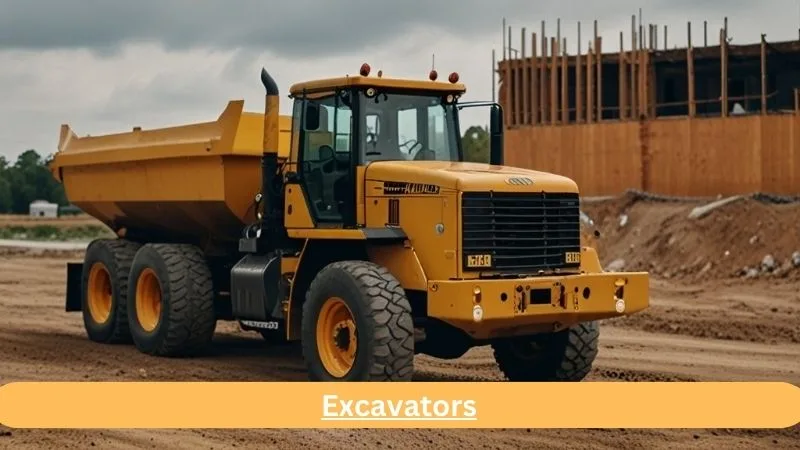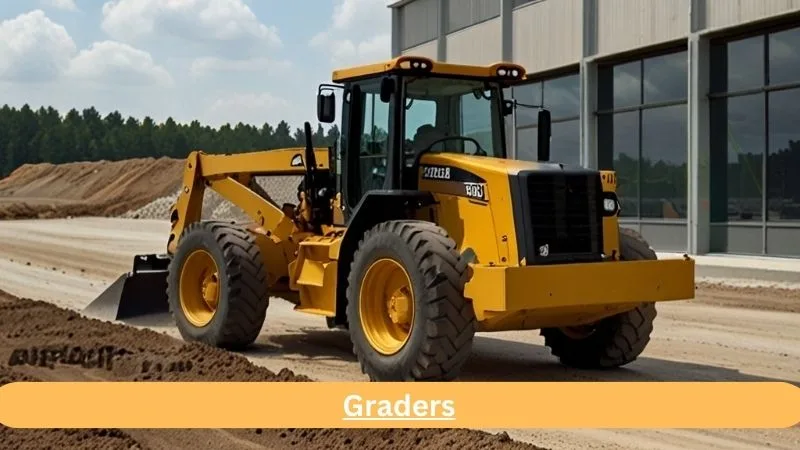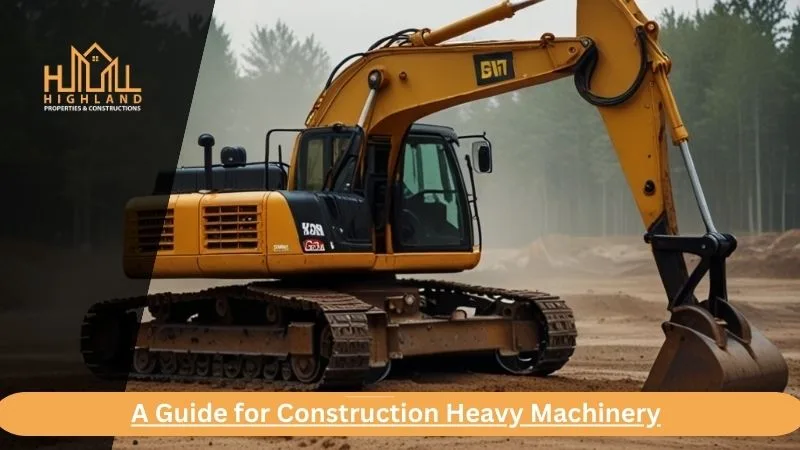A Guide for Construction Heavy Machinery
Introduction:
Modern buildings rely heavily on heavy machinery for construction, providing the power and labour needed to accomplish otherwise impossible or labour-intensive tasks. These devices are made to do various jobs, including digging, lifting, levelling, and loading, essential in constructing buildings, roads, bridges, and other infrastructures. Heavy machinery speeds up the construction process and makes it safer and more accurate, making it an essential part of the job.
Types of heavy machinery:
Heavy machinery used in construction can be broadly classified according to their functions and capacities. Every kind of machine is made to do a specific job. Therefore, it is essential to choose the right tool for the job at hand. Key categories include:
– Excavators: Used for digging and demolition.
– Bulldozer: It is used to open and level the land with a bulldozer.
– Crane: Used to lift and carry heavy objects.
– Loader: Used for loading and unloading.
– Graders: Used to create a smooth, flat surface.
– Backhoe: Various machines used for digging and moving equipment.
Excavators:

An excavator is one of the heaviest machines used on the construction site. The platform’s boom, stick, bucket, and drawbar can rotate 360 degrees. Excavators are mainly used to dig trenches, holes, and foundations. They can also be equipped with various equipment, such as hydraulic breakers, augers, and shovels, to perform tasks such as demolition, dredging, and heavy lifting. The ability to change attachments allows the excavator to be adapted to a variety of tasks, making it useful on the job site.
Also Read: Reliable Concrete Construction For Durable Structures
Bulldozers:
Bulldozers are powerful machines known for moving large amounts of dirt and debris. They have large, flat teeth on the front that push, scratch and smooth the material. Dozers are especially useful in rough terrain where other machines would struggle. Their tracks provide excellent traction, allowing them to work in mud or rough terrain. Bulldozers are generally used for jobs such as clearing land, preparing construction sites, and building roads and foundations.
Cranes:
A crane is essential for lifting and moving heavy objects to different heights and positions on the construction site. There are numerous varieties of cranes, each intended for a particular application:
– Tower Cranes: A crane fixed to the ground and used to construct high buildings.
– Mobile Cranes: These are mounted on wheels or pallets and can be moved to different locations.
– Overhead Cranes: Mostly used in factories and warehouses.
Cranes have pulleys and wires installed that can be raised and lowered, making them indispensable for tasks requiring heavy objects’ vertical and horizontal movement.
Loaders:
The Loader is a multipurpose device that can be utilized for shovelling, lifting and loading jobs. They come in several types, each suitable for different tasks:
– Wheel Loaders: Equipped with large wheels. Ideal for transporting items over long distances.
– Skid Steer Loader: Compact and highly maneuverable, ideal for narrow spaces.
– Backhoe Loader: A digging bucket is behind, and a loading bucket is in front. In this way, both digging and loading can be done. The Loader is used in various construction activities, from loading trucks to removing debris from a construction site.
Graders:

Graders are specialized machines that create smooth, flat surfaces necessary for road construction and site planning. They have long blades that can be adjusted to control objects’ movement precisely. A level is used to change the slope of the site to ensure it is level and even. This decision makes them helpful in paving roads, levelling land, and building gutters.
Backhoes:
A machine with several uses, the backhoe combines the functions of an excavator and a loader. It has a trash can behind it and a storage bin in front of it. This dual functionality makes it versatile. It can carry out several duties, such as trenching, backfill excavations, and lifting and transporting equipment. Diggers are often used for small construction, and their versatility and compact size are excellent.
Safety Considerations:
Operating heavy machinery carries significant risks, so safety is a top priority on construction sites. Workers must be adequately trained to ensure they are aware of safe machinery operation techniques and perform various tasks in the workplace. Personal protective equipment (PPE) such as hard hats, goggles, gloves and steel boots should always be worn. Additionally, regular safety inspections and following established procedures can help prevent accidents. Safety measures also include ensuring the machine is in good working order, properly maintained and equipped with appropriate features such as alarms and emergency stop devices.
Maintenance and Inspections:
Regular maintenance and proper inspection are essential for the longevity and performance of heavy machinery. Preventive maintenance includes daily inspection for wear, timely replacement of moving parts and appropriate lubrication of damaged parts. Regular inspections help detect problems before they cause machine failure, reducing the risk of downtime. Keeping detailed records of maintenance activities and using diagnostic tools can increase the effectiveness of maintenance and ensure that systems remain in good condition.
Environmental Impact:
Heavy machinery can impact the environment through fuel consumption, emissions and noise. Construction companies can reduce these impacts by using energy-efficient systems, regularly maintaining equipment to reduce emissions, and implementing noise measures. New technologies, such as generators and pollution-controlled equipment, can also reduce the environmental footprint. Good practices such as using recycled materials and minimizing waste also help reduce the environmental impact of construction.
Future Trends in Heavy Machinery:
A good understanding of heavy construction machinery, including their types, operation and maintenance, is essential for all construction workers. Using the right tools and following best practices can improve the safety, effectiveness, and efficiency of building projects successful. As technology develops, the sector will benefit from increased automation, stability and enhanced capabilities, ensuring that heavy machinery remains the fundamental foundation of modern construction.
Conclusion:
A good understanding of heavy construction machinery, including their types, operation and maintenance, is essential for all construction workers. Using the right tools and following best practices can make construction projects more efficient and safe and can improve the effectiveness, safety, and efficiency of building projects. With the ongoing advancement of technology, the sector will benefit from increased automation, stability and advanced capabilities, ensuring that heavy machinery remains the fundamental foundation of modern construction.
FAQs:
Q1. How do you handle heavy machinery?
Ans: Do not use equipment for working together on slopes or embankments. Before leaving the equipment, turn off the engine and engage the brakes. When entering and exiting the device, face it and maintain three points of contact. Always wear a seat belt.
Q2. What is the name of heavy machinery?
Ans: An excavator is a heavy machine used to dig and break materials on construction sites. It has a boom similar to a hydraulic crane and a sharp-tipped metal shovel at the end. The cabin is placed on a rotating platform to increase the machine’s manoeuvrability.
Q3. What is the use of heavy machinery?
Ans: Heavy equipment, heavy machinery, bulldozers, construction vehicles, and construction equipment are heavy vehicles specifically designed to carry out construction work, usually involving earthmoving or other significant works.





Leave a Reply